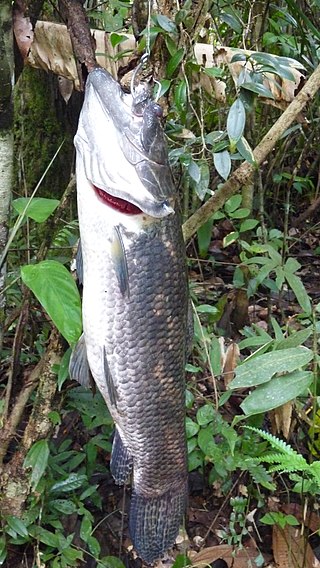
The northern alligator lizard is a species of medium-sized lizard in the family Anguidae. The species is endemic to the North American west coast.

Aquilegia coerulea, the Colorado blue columbine, is a species of flowering plant in the buttercup family Ranunculaceae, native to the Rocky Mountains, USA. Aquilegia coerulea is the state flower of Colorado.

Blue coral is a species of colonial coral. It is the only octocoral known to produce a massive skeleton. This skeleton is formed of aragonite, similar to that of scleractinia. Individual polyps live in tubes within the skeleton and are connected by a thin layer of tissue over the outside of the skeleton.

Hoplia argentea is a species of scarabaeid beetle belonging to the subfamily Melolonthinae.

Hoplias aimara, also known as anjumara, traíra, trahira, manjuma, anjoemara and wolf fish, is a species of freshwater fish found in the rivers of South America. In Amazonia, the native populations are concerned by high levels of mercury contamination which have been linked to the consumption of contaminated fish. H. aimara is a good bioindicator of such contamination.

Hoplias is a genus of fish in the family Erythrinidae found in Central and South America.

Hoplias curupira, also known as the black wolf-fish, has a wide distribution in the Amazon basin but was described as recently as 2009.

Hoplia is a genus of monkey beetles in the family Scarabaeidae. There are at least 300 described species in Hoplia.
Mimacmocera coerulea is a species of beetle in the family Cerambycidae, and the only species in the genus Mimacmocera. It was described by Breuning in 1960.
Thyestilla coerulea is a species of beetle in the family Cerambycidae. It was described by Stephan von Breuning in 1943.
Hoplia sackenii is a species of May beetle or junebug in the family Scarabaeidae. It is found in North America.
Hoplia trifasciata, the three lined hoplia, is a species of scarab beetle in the family Scarabaeidae. It is found in the eastern United States and Canada.

Hoplia dispar is a species of scarab beetle in the family Scarabaeidae. It is found in North America.
Hoplia trivialis, the dark hoplia, is a species of scarab beetle in the family Scarabaeidae. It is found in North America.
Hoplia callipyge is a species of scarab beetle in the family Scarabaeidae. It is found in Central America and North America. Adults are about a quarter inch long, oval, and brown. The beetles are active March through May and are noted for feeding on the petals of light-colored roses. However they will also feed on other flowers and the young leaves and fruit of certain plants. Larvae hatch from white eggs in soil and feed on roots and decaying plants.
Hoplia laticollis is a species of scarab beetle in the family Scarabaeidae. It is found in North America.
Hoplia modesta is a species of scarab beetle in the family Scarabaeidae. It is found in North America.
Hoplia mucorea is a species of scarab beetle in the family Scarabaeidae. It is found in North America.
Hoplia festiva is a species of scarab beetle in the family Scarabaeidae. It is found in Central America.








